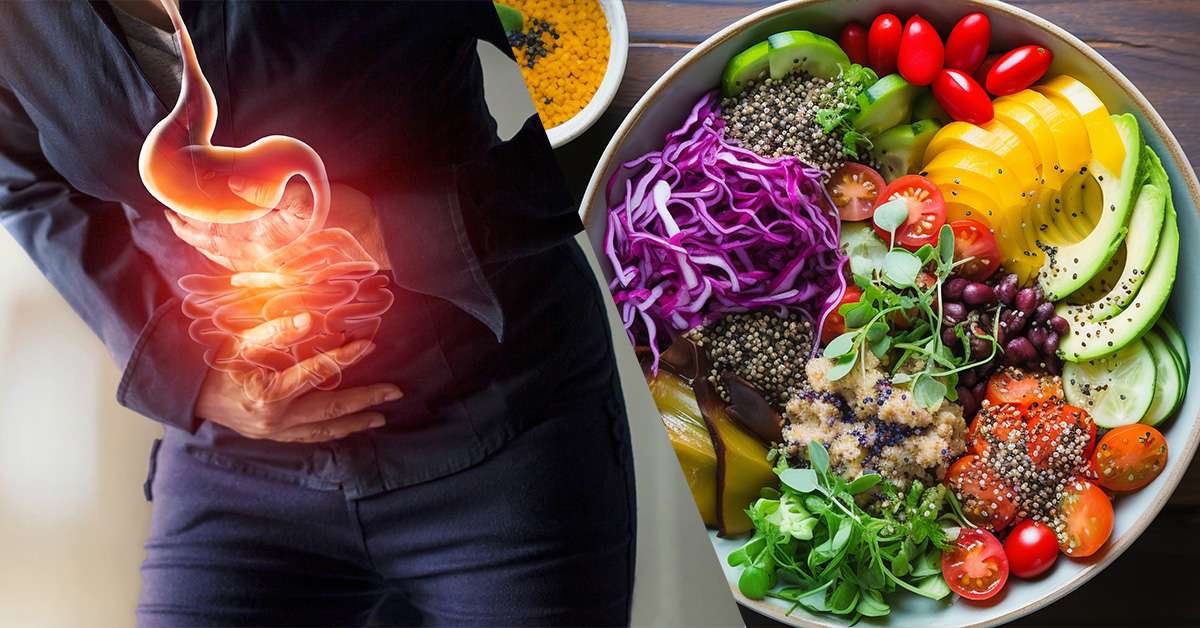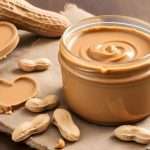Gastroesophageal reflux disease (GERD) is a common health issue that affects many individuals worldwide. It occurs when stomach acid or contents flow back into the esophagus, causing symptoms like heartburn, regurgitation, and difficulty swallowing. One of the key factors involved in managing and alleviating GERD symptoms is adopting a suitable diet plan.
A 7-day GERD diet plan incorporates various food choices and lifestyle habits that are known to alleviate the symptoms associated with this condition. The focus of this particular plan is to minimize trigger foods and emphasize meals that can have a positive impact on digestion and overall wellbeing. The plan considers meal portions, frequency, and preparation methods, as well as balancing different food groups.
Throughout this article, we will delve deeper into the rationale and benefits of the 7-day GERD diet plan, providing a practical and comprehensive guide to making informed decisions about daily meals and nutritional needs. By implementing the strategies provided, individuals who suffer from GERD can experience reduced symptoms and improved overall quality of life.
Understanding GERD
Basics of Gastroesophageal Reflux Disease
Gastroesophageal Reflux Disease (GERD) is a common condition in which stomach acid flows back into the esophagus. This backward flow, known as acid reflux, can irritate the lining of the esophagus, causing discomfort and potentially leading to long-term complications.
Several factors contribute to the development of GERD, including:
- Weakening of the lower esophageal sphincter (LES)
- Hiatal hernia
- Obesity
- Pregnancy
- Smoking
- Certain medications
A 7-day GERD diet plan can help manage symptoms by reducing the amount of acid in the stomach and promoting proper digestion.
Symptoms and Diagnosis
While occasional acid reflux is normal, frequent occurrences may indicate GERD. Common symptoms include:
- Heartburn: A burning sensation in the chest, usually after eating or at night.
- Regurgitation: A sour or bitter-tasting acid backing up into the throat or mouth.
- Dysphagia: Difficulty swallowing or the feeling of food getting stuck in the throat.
- Chest pain: Discomfort or pain in the chest, often mistaken for a heart attack.
- Chronic cough, sore throat, or hoarseness: Symptoms resulting from irritation of the throat and vocal cords by stomach acid.
To diagnose GERD, a healthcare provider may:
- Review the patient’s medical history and symptoms.
- Conduct a physical examination.
- Order tests, such as an endoscopy, to examine the esophagus and stomach.
Once GERD is diagnosed, appropriate treatment options can be explored, including dietary changes, medications, and, in some cases, surgery. The adoption of a 7-day GERD diet plan may be a crucial step towards controlling symptoms and improving overall quality of life.
Principles of a GERD Diet
GERD (Gastroesophageal Reflux Disease) is a common condition that occurs when stomach acid flows back into the esophagus, causing heartburn and other symptoms. A carefully designed diet plan can help manage GERD by reducing the frequency and severity of symptoms. There are two primary principles to follow in a GERD diet- avoiding trigger foods and incorporating foods that can help alleviate GERD symptoms.
Trigger Foods to Avoid
It is crucial to identify and avoid specific foods that can trigger GERD symptoms. These foods vary from person to person, but there are some common ones.
- Fatty and fried foods: High-fat foods can slow digestion, causing stomach acids to rise.
- Citrus fruits and juices: The acidity of these foods can irritate the esophagus.
- Chocolate: It contains compounds that may weaken the lower esophageal sphincter (LES), allowing stomach acids to flow back into the esophagus.
- Spicy foods: Spices can irritate the esophagus and trigger GERD symptoms.
- Caffeinated beverages: Coffee, tea, and sodas may relax the LES, increasing acid reflux.
- Alcohol: It can also relax the LES and exacerbate GERD symptoms.
It’s essential to note that triggers may vary between individuals. Keep track of your reactions to identify your personal triggers.
Foods That Improve GERD
A well-balanced diet with certain foods can help alleviate GERD symptoms. These foods can soothe the esophagus, reduce stomach acid, and strengthen the LES.
- Ginger: Known for its anti-inflammatory properties, ginger can reduce inflammation caused by GERD.
- Leafy greens and vegetables: Foods such as spinach, kale, broccoli, and asparagus can help neutralize stomach acid.
- High-fiber foods: Whole grains, legumes, and starchy vegetables can absorb excess stomach acid and improve digestion.
- Lean proteins: Poultry, fish, and tofu are easily digestible options compared to fatty meats.
- Non-citrus fruits: Apples, bananas, and pears are less acidic and can provide relief, as opposed to citrus fruits.
Remember that everyone’s tolerance and response to specific foods might differ. It is crucial to create a personalized plan that works best for your body. Consult your healthcare provider or a registered dietitian to create a GERD-friendly diet plan and manage your symptoms more effectively.
Overview
If you are facing Gastroesophageal Reflux Disease (GERD) and trying to manage the condition, a 7-day GERD diet plan can offer significant relief. This diet plan includes choosing the right foods, focusing on portion control, and maintaining adequate eating habits.
Daily Meal Planning Tips
To create a meal plan that benefits GERD management, follow these simple tips:
- Choose GERD-friendly foods: Opt for foods that are less likely to trigger acid reflux – incorporating lean proteins, whole grains, vegetables, and fruits that are low in acid.
- Avoid trigger foods: Reduce or eliminate common GERD triggers such as citrus, tomatoes, chocolate, carbonated drinks, alcohol, and high-fat foods.
- Regular meals: Schedule your meals timely, planning at least 4-5 smaller meals a day instead of 3 larger ones.
A basic sample meal plan outline for managing GERD could look like this:
Breakfast: Whole-grain cereal, almond milk, and sliced bananas
Snack: Apples and almond butter
Lunch: Grilled chicken, steamed vegetables, and brown rice
Snack: Low-fat yogurt with berries
Dinner: Baked salmon, green beans, and sweet potatoes.
Adjust the plan according to your specific preferences and consult a healthcare professional for personalized advice.
Portion Control and Eating Habits
Practicing portion control and paying attention to eating habits can make a big difference in GERD symptoms:
- Watch portion sizes: Opt for smaller portions to reduce strain on the digestive system and lower the risk of GERD symptoms.
- Slow down: Take your time with each meal, as eating slowly and calmly can reduce the likelihood of acid reflux.
- Chew thoroughly: Focus on properly chewing each bite to help avoid putting extra pressure on the stomach.
- Sit upright: Avoid lying down or slouching while eating, as an upright posture can prevent stomach acid from flowing back into the esophagus.
- Wait before resting: To minimize reflux symptoms, try to wait at least 2-3 hours after eating before lying down or going to bed.
By following these tips for daily meal planning and maintaining good eating habits, the 7-day GERD diet plan can provide relief and effectively manage your symptoms. Remember to consult with your healthcare professional for personalized guidance and recommendations.
7-Day GERD Diet Plan: Effective Meal Strategies
Discover a 7-day GERD diet plan designed to alleviate symptoms and promote digestive health. This comprehensive guide offers daily meal strategies carefully selected to minimize acid reflux triggers.
Day 1: Getting Started
Begin your GERD-friendly diet with a smooth and easy-to-digest breakfast such as oatmeal served with almond milk, topped with a sprinkle of cinnamon and honey. For lunch, enjoy a grilled chicken salad with light dressing, and dinner can consist of baked fish accompanied by steamed vegetables and brown rice.
Day 2: Soothing Choices
On day two, go for a breakfast of a banana smoothie made with almond milk, chia seeds, and honey. For lunch, opt for a veggie wrap with hummus spread and a light, clear soup. Dinner can be a soothing bowl of pasta with a simple tomato sauce and plenty of veggies.
Day 3: Variation and Moderation
Introduce variety with a yogurt parfait for breakfast, layered with granola and mixed berries. Lunch can be a rice bowl with grilled tofu and veggies, topped with a light, low-fat dressing. For dinner, try pork loin served with roasted vegetables and quinoa.
Day 4: Midweek Balance
On the fourth day, a warm and nutritious breakfast porridge made from quinoa, almond milk, and topped with a drizzle of maple syrup is recommended. For lunch, prepare a simple salad of mixed greens accompanied by a light sandwich. Dinner can be a hearty yet gastric-friendly vegetable curry served over brown rice.
Day 5: Exploring New Flavors
Experiment with a chia seed pudding flavored with vanilla extract and honey for breakfast. At lunchtime, go for a pita pocket stuffed with lean, roasted turkey and veggies. As for dinner, create a delicious stir-fry using chicken breast, bell peppers, and broccoli, served over brown rice.
Day 6: Solidifying Habits
Start with a smoothie bowl filled with frozen berries, almond milk, and a tablespoon of almond butter. Lunch can consist of a quinoa salad with plenty of greens, veggies, and grilled shrimp. For dinner, enjoy a comforting bowl of chicken noodle soup with a side of crusty whole-grain bread.
Day 7: Preparing for Long-Term Success
On the final day, serve a fluffy egg-white omelet with spinach and low-fat cheese for breakfast. At lunch, try a hearty vegetable soup with whole-grain crackers and a light cheese spread. As your last dinner, savor a grilled salmon filet served with a side of steamed potatoes and green beans.
Recipes for GERD Management
When planning a GERD-friendly diet, it is essential to choose recipes that minimize acid reflux. The key is to select dishes that are low in fat, avoid common trigger foods, and incorporate ingredients with alkaline properties. Here are a few recipes that effectively manage GERD symptoms.
1. Breakfast: Banana Oatmeal
Banana Oatmeal is a perfect breakfast option for those with GERD, as it avoids common triggers like citrus fruits and coffee. The combined benefits of bananas and oats offer a soothing start to your day.
Ingredients:
- 1 cup old-fashioned oats
- 2 cups water
- 1 ripe banana, mashed
- 1-2 tsp honey
- 1/4 cup almond milk
Instructions:
- Combine oats and water in a saucepan, stirring occasionally.
- Cook oats over medium heat until the mixture thickens.
- Add mashed banana and honey to the saucepan, stir well.
- Pour in almond milk and cook the mixture for 2 more minutes.
- Serve while warm and enjoy.
2. Lunch: Grilled Chicken Salad
A salad with grilled chicken, mixed greens, and a variety of alkaline vegetables makes for a delicious and satisfying GERD-friendly lunch. Use a light vinaigrette dressing or opt for a simple squeeze of lemon to avoid excess fats that may trigger GERD symptoms.
Ingredients:
- 4 oz grilled chicken breast, sliced
- 2 cups mixed greens (spinach, lettuce, and arugula are ideal)
- 1/4 cup sliced cucumber
- 1/4 cup cherry tomatoes, halved
- 1/4 cup chopped avocado
- 1 tbsp lemon juice or light vinaigrette dressing
Instructions:
- Combine mixed greens, cucumber, cherry tomatoes, and avocado in a large salad bowl.
- Top the salad with grilled chicken slices.
- Drizzle lemon juice or light vinaigrette dressing over the salad and toss gently.
- Serve immediately.
3. Dinner: Ginger-Garlic Seared Salmon and Steamed Vegetables
Salmon is an excellent protein source that is low in fat and high in omega-3 fatty acids. The ginger and garlic used for seasoning can also help combat GERD symptoms. Accompanied by a variety of steamed vegetables, this meal is a perfect end to the day.
Ingredients:
- 6 oz salmon fillet
- 1 tsp grated ginger
- 1 garlic clove, minced
- 1 tbsp olive oil
- Salt and pepper to taste
- 2 cups steamed vegetables (e.g., carrots, green beans, broccoli)
Instructions:
- In a small bowl, mix ginger and minced garlic.
- Heat olive oil in a non-stick pan over medium heat.
- Season salmon fillet with salt, pepper, and ginger-garlic mixture.
- Place the salmon fillet in the pan and cook for 3-4 minutes per side until seared and cooked to your preference.
- Serve the salmon fillet alongside cooked steamed vegetables.
A GERD diet doesn’t have to be boring or tasteless. By incorporating these recipes into your meal plan, you can effectively manage your GERD symptoms and enjoy flavorful, satisfying meals.
Lifestyle Changes Accompanying Diet Plan
A successful 7-day GERD diet plan involves not only dietary changes but also some key lifestyle modifications. By incorporating these changes, individuals can better manage their GERD symptoms and improve their overall health.
Establish regular eating habits: Start by eating smaller meals more frequently and avoid overeating. It is recommended to have four to six smaller meals throughout the day instead of three large ones. This allows the stomach to better handle the food, reducing the pressure on the lower esophageal sphincter (LES).
Monitor trigger foods: Each individual with GERD may have a unique set of trigger foods that worsen their symptoms. Keep a food diary to track which foods trigger discomfort and avoid them when possible. Common GERD trigger foods include tomatoes, citrus fruits, spicy foods, chocolate, coffee, and alcohol.
Change eating habits: Wait at least two to three hours after eating before lying down or going to bed as this could cause acid reflux. Additionally, try to eat slowly and chew food thoroughly to facilitate its proper digestion.
| Activity | Recommendation |
|---|---|
| Meal frequency | 4 to 6 smaller meals per day |
| Food diary | Track and avoid trigger foods |
| Waiting before lying down | 2 to 3 hours |
| Eating pace | Slow and thorough |
Stay well-hydrated: Drinking enough water throughout the day helps dilute stomach acid and reinforce the digestive process. Aim for at least eight 8-ounce glasses of water per day. Limit your intake of caffeinated, carbonated, or acidic beverages as they could exacerbate GERD symptoms.
Maintain a healthy weight: Excess weight, particularly around the abdomen, puts extra pressure on the stomach and LES, increasing the likelihood of acid reflux. Losing weight through a balanced diet and regular physical activity can greatly benefit those with GERD.
Quit smoking and limit alcohol consumption: Smoking weakens the LES, while alcohol increases the production of stomach acid. Eliminating or reducing these habits can significantly improve GERD symptoms.
Incorporating these lifestyle changes alongside a 7-day GERD diet plan can help individuals manage their symptoms more effectively and promote overall health.
Monitoring Your Progress
When embarking on a 7-day GERD diet plan, it’s crucial to monitor your progress throughout the week. This includes tracking your symptoms, meal portions, and noting specific triggers that may result in acid reflux.
Begin by maintaining a daily food journal where you can record the following information:
- Date and time of meals
- A brief description of the meal consumed
- Any symptoms experienced and their severity
- Any identified triggers
As an example, your food journal might look like this:
| Date | Time | Meal | Symptoms | Triggers |
|---|---|---|---|---|
| 2024-01-29 | 8am | Scrambled eggs with spinach, whole wheat toast | Mild | None |
| 2024-01-29 | 12pm | Grilled chicken salad with balsamic vinaigrette | None | None |
| 2024-01-29 | 7pm | Brown rice, steamed vegetables, baked salmon | Moderate | Spicy vegetables |
Reflecting on the completed food journal by the end of the 7-day GERD diet, assess symptom reduction and improvements by considering the following:
- Did certain meals result in fewer symptoms?
- Were any specific foods consistently associated with symptom flare-ups?
Avoid falling into the trap of comparing results to other individuals online. Each person’s body may react differently to various foods, and GERD triggers may vary between individuals. As such, it’s important to tailor your diet plan to what works best for your body.
Remember that progress is not always linear. While following a GERD diet plan, you may experience some symptom flare-ups despite observing the appropriate food choices. Don’t be discouraged; instead, continue to fine-tune your diet based on your observations, and seek guidance from a healthcare professional when necessary.
Lastly, incorporate positive lifestyle changes alongside the 7-day GERD diet plan. This includes maintaining healthy weight, engaging in regular physical activity, and practicing stress reduction techniques such as meditation or yoga. Keep track of these lifestyle factors within your food journal and note any improvements over time.
When to Consult Healthcare Professionals
It’s essential to know when to consult healthcare professionals when following a 7-day GERD diet plan. In some cases, symptoms might persist or worsen despite adherence to the plan.
Particular instances to seek professional assistance include:
- Experiencing severe or persistent heartburn even after following the diet plan for a suggested duration.
- Noticeable weight loss without making intentional efforts to shed pounds.
- Facing difficulty swallowing food or feeling as if food is stuck in the throat.
- Exhibiting symptoms such as anemia, bleeding, vomiting, or choking during sleep.
Healthcare professionals can assess the situation, conduct necessary tests, and prescribe the appropriate treatment to alleviate discomfort and promote healing. They may recommend adjusting the diet, initiating medication, or in rare cases, considering surgical options.
For optimal results, maintain regular check-ups and discussions with healthcare professionals about the effectiveness of the 7-day GERD diet plan. Open communication and transparency about symptoms can positively impact medical guidance and, consequently, the management of GERD symptoms.
In summary, knowing when to consult healthcare professionals is crucial for a successful GERD diet plan. Paying close attention to symptoms, being aware of the indications to seek help, and maintaining regular check-ins with healthcare providers can lead to better outcomes and long-term relief.



